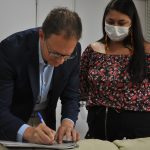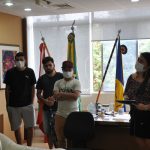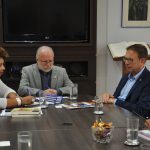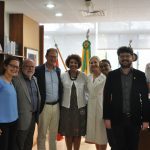UFSC groundbreaking study in Nature journal reveals the thresholds to avoiding collapse in the Amazon

Drone view of the Amazon River and the Amazon rainforest, in Peru (Photo by André Dib)
An unprecedented and holistic approach to the Amazon forest resilience, developed by a team of scientists from the Universidade Federal de Santa Catarina (UFSC) and other institutions, is featured in the Nature journal, one of the most relevant scientific journals in the world. The research carries out a comprehensive data review and draws up scenarios based on the mapping of five major drivers of water stress affecting the region: global warming, annual rainfall, rainfall seasonality intensity, dry season length and accumulated deforestation. In addition, it points out possible ways of changing the scenario to avoid collapse. The estimate is that in the next 25 years, 10% to 45% of the Amazon could reach a tipping point, with unexpected transitions in the landscape.
The research is conducted by scientist Bernardo Monteiro Flores, postdoctoral researcher in Ecology at UFSC, supervised by professor Marina Hirota, co-author of this study. Along with them, Catarina Jakovac, from the Department of Plant Science, and Carolina Levis, from the Graduate Program in Ecology, also signed the article, which includes renowned scientists such as one of the most cited Brazilian experts in climatology in the world, Carlos Nobre.

Study is on the cover of Nature
The detailed analysis, which was the subject of a report released in 2021 that brought updated data from new perspectives, presents evidence of the Amazon forest approaching the critical threshold – what scientists call the “tipping point”. Using satellite images, climate observation data, climate models and paleoecology, researchers were able to understand the forest main stress factors and how the interaction between them can further accelerate the destruction of an ecosystem.
“All the effects of stress are water related. For each of these five major drivers there are critical thresholds. And the interaction between the stress drivers can have a synergistic effect”, the researcher points out. “We used all available knowledge to understand the thresholds at which the forest could cease to exist”.
Boundary of deforastation is 10% of the original forest biome cover
The group of scientists suggests that the temperature must not fluctuate above 1.5 °C,
with annual rainfall up to 1,800 mm. The cumulative water deficit must not be above -350mm, as well as the dry season must not last more than 5 months. Lastly, the safe boundary of deforastation is 10% of the original forest biome cover, which requires restoring at least 5% of the biome.
Flores explains that rainfall is essential for the forest life. Every day, the forest trees pump a huge amount of water – up to 500 liters for a single tree – from the ground to the atmosphere, which increases the atmospheric moisture. Besides eliminating water, the trees also release volatile organic compounds that contribute to cloud formation. “The trees are natural rain factories”, he explains.

Drone view of an Area of Relevant Ecological Interest (Photo by André Dib)
In addition, winds in the Amazon region flow predominantly from east to west, carrying clouds and moisture, which increase rainfall along the way. This mechanism, called “positive feedback”, results in the forests’ ability to increase rainfall, which contributes to their resilience. This is considered “the main reason for which the Amazon remained covered by forest throughout 65 million years (Cenozoic era), despite climate change”.
The scenario now is starting to change, especially as a result of climate change and soil use. Warming temperatures, extreme droughts, deforestation and fires affect internal parts of the system. “The feedback mechanisms that increase forest resilience are losing strength and are being replaced by novel feedbacks that increase the risk of a critical transition”, they point out in the article.
“The most important mechanism which has been keeping the forest alive all this time is the recycling of rainfall. Therefore, the forest needs the rain that falls and which is recycled by the forest itself in order to exist”, explains the researcher. “The forest has never experienced what it is experiencing now in terms of climate, when the effects of drought and high temperatures are combined”.
Global risk
The idea of a collapse in the Amazon forest is disturbing for a number of reasons, but one in particular has caught the world’s attention – the risk of disrupting the global climate system. “The Amazon stores huge amounts of carbon. Forest loss will result in carbon emissions that may accelerate global warming within 15 to 20 years”, the scientists indicate.
Recent observations of the forest’s carbon flux revealed that the southeastern Amazon has turned from a carbon sink into a carbon source, probably due to disturbances in soil use. “Moreover, forest loss in the Amazon not only reduces the atmospheric moisture flow in the region but it can also affect precipitation conditions in other parts of the world, such as Asia or the Antarctica.”

Drone view of a recent illegal deforestation in the indigenous territory Uru-eu-wau-wau in Roraima, in 2019 (Photo by Andre Dib)
The study also addresses another aspect of preservation, discussing the role of biodiversity and indigenous peoples and local communities in shaping the Amazon forest resilience. “These elements of the system have contributed to increasing the ecosystem adaptability, providing different strategies to deal with climate change”, the researchers point out. “Today, the changes in soil use in the region are destroying the biodiversity and the ancient ecological knowledge of the Amazonian peoples who have maintained healthy and resource-rich forests for thousands of years”, said Caroline Levis, who holds a doctoral degree from UFSC and is one of the authors of this study.
Professor Marina Hirota highlights that the Amazon is a complex system, which makes it extremely challenging to predict how the different types of forest will respond to global change. “If we want to avoid a systemic transition, we must follow a precautionary approach and take actions which will maintain the forests resilient for the next decades”, she stated.
The authors also indicate that in order to maintain the Amazon forest resilience, it is necessary to have a combination of local and global efforts. They also point out that, locally, Amazonian countries need to cooperate to end deforestation and degradation and to expand restoration, which will reinforce forest-rainfall feedback.

Intentionally-set forest fire (Photo by Andre Dib)
These actions, according to the researchers, can benefit from a strong governance within indigenous territories and protected areas. “All countries need to cooperate to stop greenhouse gas emissions, mitigating the impacts of climate change. Both fronts are crucial to maintain the forest system for future generations”.
According to Flores, the holistic approach of the research is relevant and unprecedented, since it deals with a complex system, also taking into consideration the human factor. “To be able to maintain the forest more resilient, we must monitor all the stress drivers and their interactions. We use the precautionary principle: since we cannot tell what is going to happen and the consequences are dreadful, the threshold idea is to keep us away from a disaster”.
From savannas to grasslands, with only a few species: what would be the end of the Amazon forest?
Among its findings, the study outlines the scenarios and landscapes which could occur after the Amazon collapse. Forest degraded areas already have their landscape altered as a result of the interaction between stress drivers. “These alternative trajectories may be irreversible or transient depending on the strength of the novel interactions”, point out the researchers in the article.
For instance, in the ‘degraded forest’, feedbacks often involve competition between trees and other opportunistic plants, as well as interactions between deforestation, fire and seed limitation. Secondary forests are more likely to be cleared than mature forests.

Degraded areas can take over the forest. Igapó forest in the middle of the Amazon, mid Rio Negro, after catching on fire twice (Photo by Bernardo Flores)
In another degradation scenario, the feedbacks involve interactions between low tree cover and fire, soil erosion and seed limitation. Therefore, the landscape would be invasive grasses and opportunistic plants. Far from agricultural areas and pastures, the savanna landscape can also be the outcome of interactions between stress elements from the forest, which can occur after repeated fires, for instance.
What may happen is that the Amazon will not necessarily cease to be a forest, but will have very different areas, with less diversity, dominated by one or few species that self-perpetuate, like forests dominated by lianas and bamboos”, Flores summarizes.

Biodiversity is threatened by forest collapse (Photo by Andre Dib)
“We discuss how the inherent complexity of the Amazon adds uncertainty about future dynamics, but also reveals opportunities for action. Keeping the Amazon forest resilient in the Anthropocene will depend on a combination of local efforts to end deforestation and degradation and to expand restoration, with global efforts to stop greenhouse gas emissions”, the experts say.
How to prevent the Amazon forest collapse, according to the study:
Global warming: to avoid large-scale ecosystem transitions, scientists indicate a safe-boundary for the Amazon forest at 1.5 °C for global warming above pre-industrial levels, in concert with the Paris Agreement goals.
Annual rainfall: experts suggest a safe boundary in annual rainfall conditions at 1,800 mm.
Rainfall seasonality intensity: satellite observations of tree cover distributions across tropical South America suggest a critical threshold in rainfall seasonality intensity at −400 mm of the maximum cumulative water deficit. To avoid local-scale collapses due to compounding disturbances, it is suggested a safe boundary at −350 mm.
Dry season length: satellite observations of tree cover distributions across tropical South America suggest a critical threshold at 7 months of dry season length. To avoid local-scale ecosystem transitions, scientists suggest a safe boundary at five months.
Accumulated deforestation: the scientists suggest a safe boundary of accumulated deforestation of 10% of the original forest biome cover, which requires ending large-scale deforestation and restoring at least 5% of the biome.

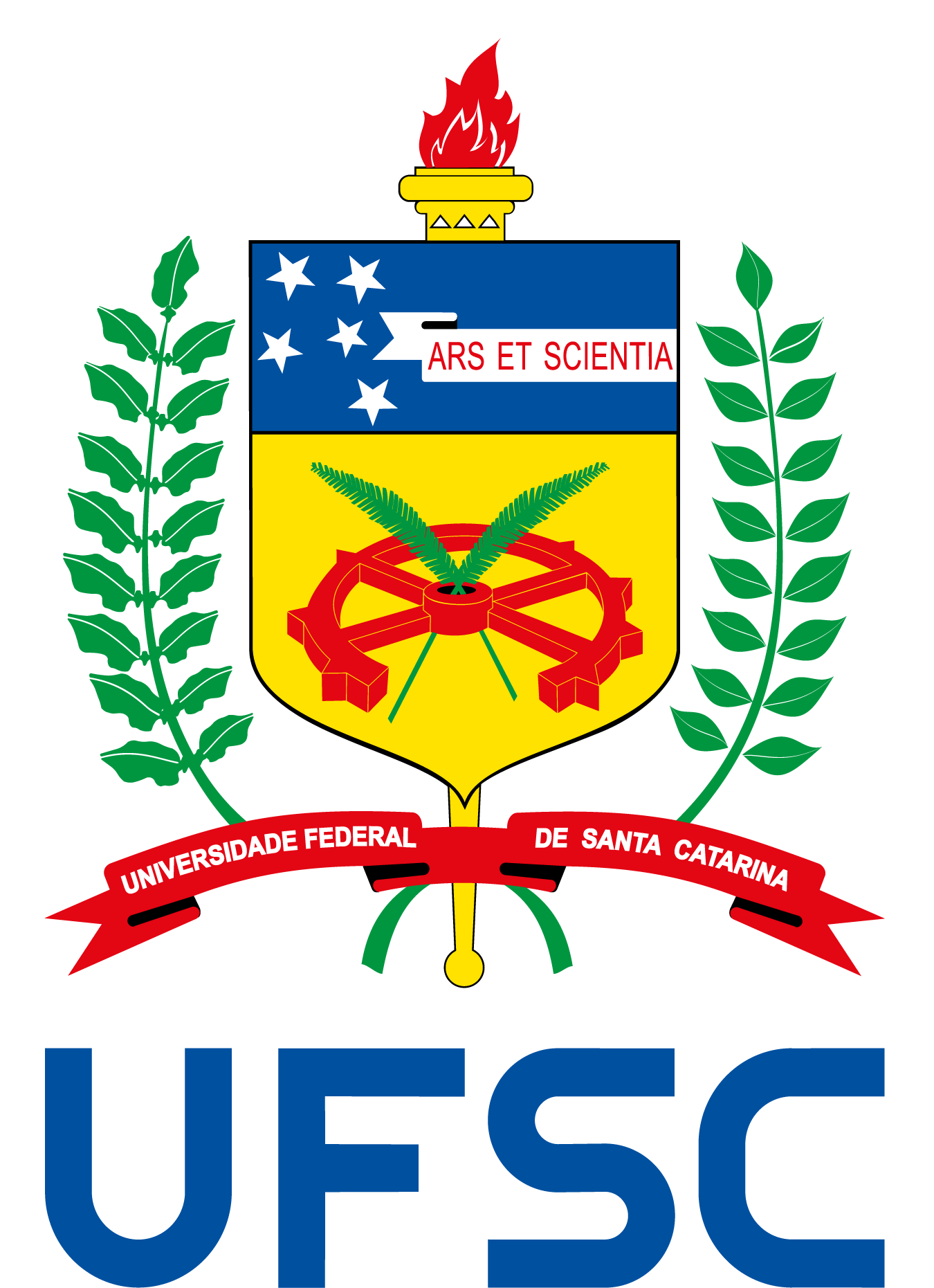



 The Universidade Federal de Santa Catarina is studying partnerships in specialized areas with seven universities, three from Japan and four from Singapore. The networking began during an international mission that lasted 15 days and ended on 26 November. The Prorector for Research and Innovation, Jacques Mick, was part of the group led by the Support Foundation for Research and Innovation of the State of Santa Catarina (Fapesc) and by the Santa Catarina Association of Educational Foundations (Acafe). The visit was sponsored by the Santa Catarina government, interested in expanding the mechanisms of cooperation between the state, universities, and the private sector to promote development.
The Universidade Federal de Santa Catarina is studying partnerships in specialized areas with seven universities, three from Japan and four from Singapore. The networking began during an international mission that lasted 15 days and ended on 26 November. The Prorector for Research and Innovation, Jacques Mick, was part of the group led by the Support Foundation for Research and Innovation of the State of Santa Catarina (Fapesc) and by the Santa Catarina Association of Educational Foundations (Acafe). The visit was sponsored by the Santa Catarina government, interested in expanding the mechanisms of cooperation between the state, universities, and the private sector to promote development. On 5 December, members of the Central Administration had a meeting with the Consul General at the U.S. Consulate General in Porto Alegre, Shane Christensen, and the Cultural Attaché, Beata Angelica, at the Rector´s Office. The meeting aimed at discussing the resource feasibility for the implementation of the indigenous student residence project at the Universidade Federal de Santa Catarina (UFSC), Florianópolis Campus.
On 5 December, members of the Central Administration had a meeting with the Consul General at the U.S. Consulate General in Porto Alegre, Shane Christensen, and the Cultural Attaché, Beata Angelica, at the Rector´s Office. The meeting aimed at discussing the resource feasibility for the implementation of the indigenous student residence project at the Universidade Federal de Santa Catarina (UFSC), Florianópolis Campus.